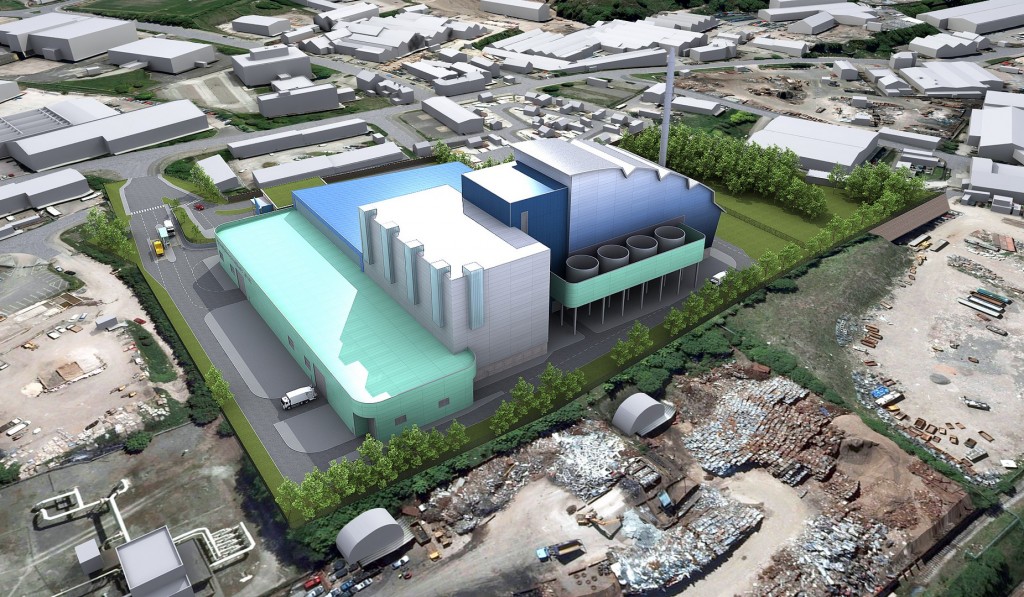A week after the Department for Communities and Local Government refused to hold a public inquiry into controversial plans for a waste incinerator in North Yorkshire, Calderdale Council has announced that tomorrow, on Monday 11 February, Calderdale’s Cabinet will consider a report which recommends the Council invests £9m in a new waste incinerator to be constructed at Bowling Back Lane in Bradford.
If you want to tell the Cabinet what you think of this, here is the list of Cabinet members, with links to their email addresses.
More than 10,000 people in North Yorkshire signed a petition against the proposed Allerton Park incinerator. Protesters claim the scheme is too big and is designed to burn far more waste than North Yorkshire produces. York Councillor Dave Taylor said,
“There’s now an over-supply of incinerators. The Allerton one is ludicrously over-specified and will have to attract waste from other sources.”
So why can’t Calderdale and Bradford take their waste to Knaresborough instead of building another expensive incinerator in the middle of Bradford? (Sorry Knaresborough). Or – a far better solution – use the range of alternative waste technologies identified in the 2008 British Society for Ecological Medicine Report on The Health Effects of Waste Incinerators?
The proposed Bradford waste incinerator will generate combined heat and power. Calderdale Council is billing it as a “waste management facility”. The Council’s press release avoids any mention of incineration, stating merely that the “facility” will “generate energy from waste after extracting valuable materials for recycling.” Folk in North Yorkshire commented,
“‘Doublespeak’ as Orwell would have called it. We had the same – they called it “Energy from Waste”!
Stampede to incinerate waste
A Greenpeace Report says,
“Local authorities in the UK are now stampeding towards huge incineration plants, capable of burning 200,000 tonnes or more of rubbish per annum.”
This is because, after years of failing to deal sensibly with our rubbish, local authorities now have to meet the targets in the European Landfill Directive for reducing the amount of organic waste that goes to landfill sites.
Opponents of the proposed Allerton Park incinerator say that estate agents have told them that its construction would reduce their house values by 40%. This would not be a problem with the proposed Bowling Back Lane incinerator, since it is in a largely industrial area and the few local residents mostly live in mobile homes. Which itself raises the question of environmental justice. But why does an incinerator devalue local house prices? Is it because of a distaste for waste? Or could it be because there are health risks from being close to a waste incinerator?
The Waste Incineration Directive aims to
“prevent or limit, as far as practicable, negative effects on the environment, in particular pollution by emissions into air, soil, surface and groundwater and the resulting risks to human health, from the incineration and co-incineration of waste.”
Any waste incinerator built after Jan 1 2013 will have to meet the Directive’s safety standards.
But Greenpeace says that if local authorities’ rush to build waste incinerators goes ahead,
“The many toxic pollutants contained in the stack gases and ashes produced by all incinerators will threaten the health and quality of life of millions of people.”
The Waste Incineration Directive tightens up pollution control from waste incinerators, but Greenpeace says, “there is no technology that can take out all of the pollutants”.
Ecological Medicine Report calls for incinerator phase out
As well as gas-borne pollutants, waste incinerators produce large quantities of contaminated ash. The contaminants include heavy metals like lead and cadmium as well as toxic compounds like dioxins. They are usually deposited in landfills, leaving a toxic mess for future generations. Rather alarmingly, the Bradford incinerator plans are to reprocess the Incinerator Bottom Ash (IBA) at another ‘facility’ to segregate ferrous metals and to make the IBA suitable for use as a secondary aggregate. Bad things have happened elsewhere through the use of incinerator ash in aggregate.
A 2008 British Society for Ecological Medicine Report on The Health Effects of Waste Incinerators stated,
“the weight of evidence, collected within this report, is sufficient in the authors’ opinion to call for the phasing out of incineration as a way of dealing with our waste.”
The £1bn contract for the 25 year waste incineration project has been awarded to Pennine Resource Recovery. The cost of constructing the incinerator is £170m. Construction is due to start this spring and incineration should start in 2016.
Despite an Early Day Motion calling on the Government to remove incentives for biomass and biofuels energy generation, it looks as if this is unlikely to happen and Pennine Resource Recovery will receive subsidies under the Renewables Obligation when incineration starts. This is despite the fact that increasing the use of bio-energy generation for electricity is leading to food shortages, land grabs, large carbon debts and distracting attention from effective ways of reducing climate change.

